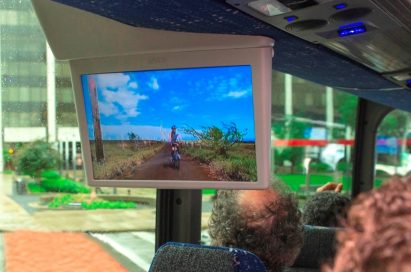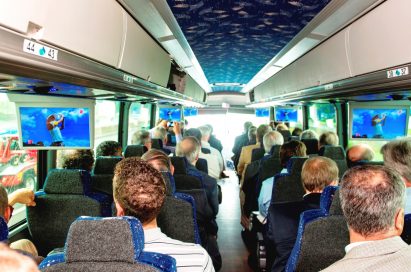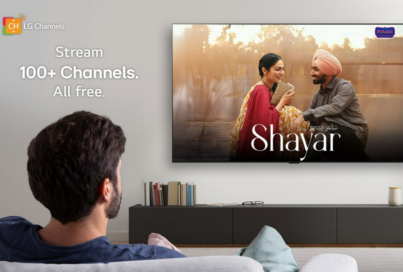FIELD TESTS OF NEXT-GEN TV BROADCAST SYSTEM SHOW CAPABILITIES OF EMERGING ATSC 3.0 STANDARD
Cleveland Test Results Verify Improved Reception, Simultaneous
Transmission of Mobile, Handheld and 4K Ultra HDTV Signals

CLEVELAND, July 10, 2015 – Television broadcasters will reach even more viewers with robust, digital over-the-air ATSC 3.0 signals, the improved broadcast transmission system under development now with key elements being field tested here this summer.
Under an experimental broadcast license from the FCC, Tribune Broadcasting’s WJW-TV is providing a TV transmitter, tower and 6-MHz channel for the ATSC 3.0-related field testing in Cleveland conducted since mid-May by LG Electronics, its Zenith R&D Lab, and GatesAir.
These real-world field tests represent an important milestone in the collaborative effort by LG, GatesAir and Zenith to develop core technologies behind the new ATSC 3.0 Standard. In fact, their innovations are expected to be used in the majority of the baseline Physical Layer transmission system, which is moving toward ATSC Candidate Standard status this summer.
This week in Cleveland, expert viewers visited a number of locations, witnessing how the more robust TV system will attract mobile viewers, connect viewers with Internet content, reach those in difficult reception locations, and delight owners of future 4K Ultra High-Definition TV sets with pristine 4K content delivered over-the-air using the new ATSC 3.0 standard.
The system being tested in Cleveland – dubbed “Futurecast” by proponents GatesAir, LG and Zenith – is a leading contributor to the effort to develop a next-generation ATSC 3.0 broadcast standard, which is being standardized by the Advanced Television Systems Committee.
Initial Results: Broader Coverage, More Viewers
Like similar field tests last fall in Madison, Wis., the Cleveland results are very encouraging. More than 75,000 pieces of additional data collected by engineers in the North Coast tests show how ATSC 3.0 will be able to deliver 4K Ultra HD content and two robust mobile TV streams in a single 6-Megahertz channel, while optimizing indoor reception and offering unparalleled spectrum efficiency.
Experts report that results in Cleveland are even more encouraging than the previous Wisconsin tests, with improved signal acquisition for mobile TV reception in fast-moving vehicles and at locations ranging from downtown’s concrete canyons to suburban and rural areas 50 miles from the transmitter.
“We’re pleased to play an integral role in the future of TV broadcast technology, putting an unused transmitter and vacant channel to use so that the proposed transmission system could be tested throughout the day and night. These initial field test results show that ATSC 3.0 technologies are real and can deliver real benefits to broadcasters and viewers alike,” said John Cifani, chief engineer of WJW-TV, the local Fox affiliate.
The Futurecast physical layer technologies are designed to provide the optimized combination of broadcasting capabilities for fixed, portable and mobile use. Flexible parameters allow broadcasters to mix diverse services – from fixed 4K reception to deep-indoor handheld reception to high-speed mobile reception – in a single RF channel with maximum efficiency.
Improved Reception, Flexibility for New Business Models
“Our technology is designed to fully meet broadcaster requirements for ATSC 3.0 and advance the goal of moving rapidly to next-generation broadcasting. Whether watching from deep inside a building or along the Lake Erie lakefront, field test results show that our ATSC 3.0-enabling technology performs exactly as expected,” said Dr. Skott Ahn, President and Chief Technology Officer, LG Electronics.
“This means that broadcasters can look forward with confidence to reaching even more viewers with traditional television, with new Internet-based content, and with new money-making interactive services and advertising capabilities,” he said.
Key benefits of the LG/GatesAir/Zenith ATSC 3.0 technologies being field tested in Cleveland include:
- Data throughput increases of 30 percent and improved multipath performance (compared with the current DTV standard) for fixed and portable TV reception;
- Enhanced indoor TV signal penetration for mobile reception thanks to flexible system parameter choices;
- Advanced modes for delivery of very high data rates and very robust transmission capabilities;
- State-of-the-art error correction coding and signal constellations;
- Future Extension Frames to support evolution of future broadcast systems; and,
- Improved single frequency network service.
Advanced Emergency Alerting with ATSC 3.0
Rich Redmond, Chief Product Officer for Gates Air, said, “Not only will reception be improved, but the advanced IP-based distribution and mobile broadcasting capabilities of ATSC 3.0 will shine through in times of emergency. Our collaborative innovations will support industry-wide efforts to evolve over-the-air business models, support next-generation warning systems and extend the reach of digital TV across greater populations.” Redmond adds that this includes leveraging AWARN (the Advanced Warning and Response Network) to deliver broadcast emergency announcements to TV sets and mobile devices containing rich media, maps, graphics, video, text, and audio.”
In addition to participating in field testing of ATSC 3.0 enabling technologies, expert viewers here today witnessed advanced emergency alerting capabilities thanks to a demonstration hosted by local CBS affiliate WOIO-TV, a Raycom Media station and member of the Pearl TV broadcast technology partnership.
AWARN will capitalize on the robust transmission and improved mobile and fixed reception promised by ATSC 3.0, according to WOIO-TV General Manager Dominic Mancuso.
“Local broadcasters are vital links to our viewers here in Cleveland and across the country. Our viewers know that they can trust us to have the latest information in times of public safety emergencies. With ATSC 3.0 and AWARN, the public won’t be dependent on Internet or local phone service,” he said.
Redefining Broadcasting’s Future
Expected to redefine TV broadcasting for decades to come, the next-generation broadcast television standard will require higher capacity to deliver 4K Ultra-High-Definition services, robust reception on mobile devices and improved spectrum efficiency. The increased payload capacity of the physical layer combined with HEVC encoding will allow broadcasters many more options when planning their broadcast service offerings.
Designed for easy extension to various current and future transport formats, the LG/GatesAir/Zenith solutions optimize efficiency for the most-used data formats (Internet Protocol, Transport Stream) via customized stream compression.
The system supports single-frequency networks and/or multiple transmitters, and its use of a single RF transmission’s flexible physical layer profile assures optimum quality of service. The system is designed to support evolution to future broadcast systems even beyond ATSC 3.0.
Equally significant, the superior RF approach of the proven Futurecast system addresses the co-channel and adjacent-channel interference challenges related to the anticipated UHF spectrum repacking.
Development of ATSC 3.0 technologies represents the latest collaboration among LG, Zenith and GatesAir, co-inventors of the transmission system behind the ATSC A/153 Mobile Digital TV Standard, adopted by the industry in 2009. Zenith invented the core transmission system at the heart of today’s ATSC A/53 Digital Television Standard, approved by the Federal Communications Commission in 1996.
# # #




